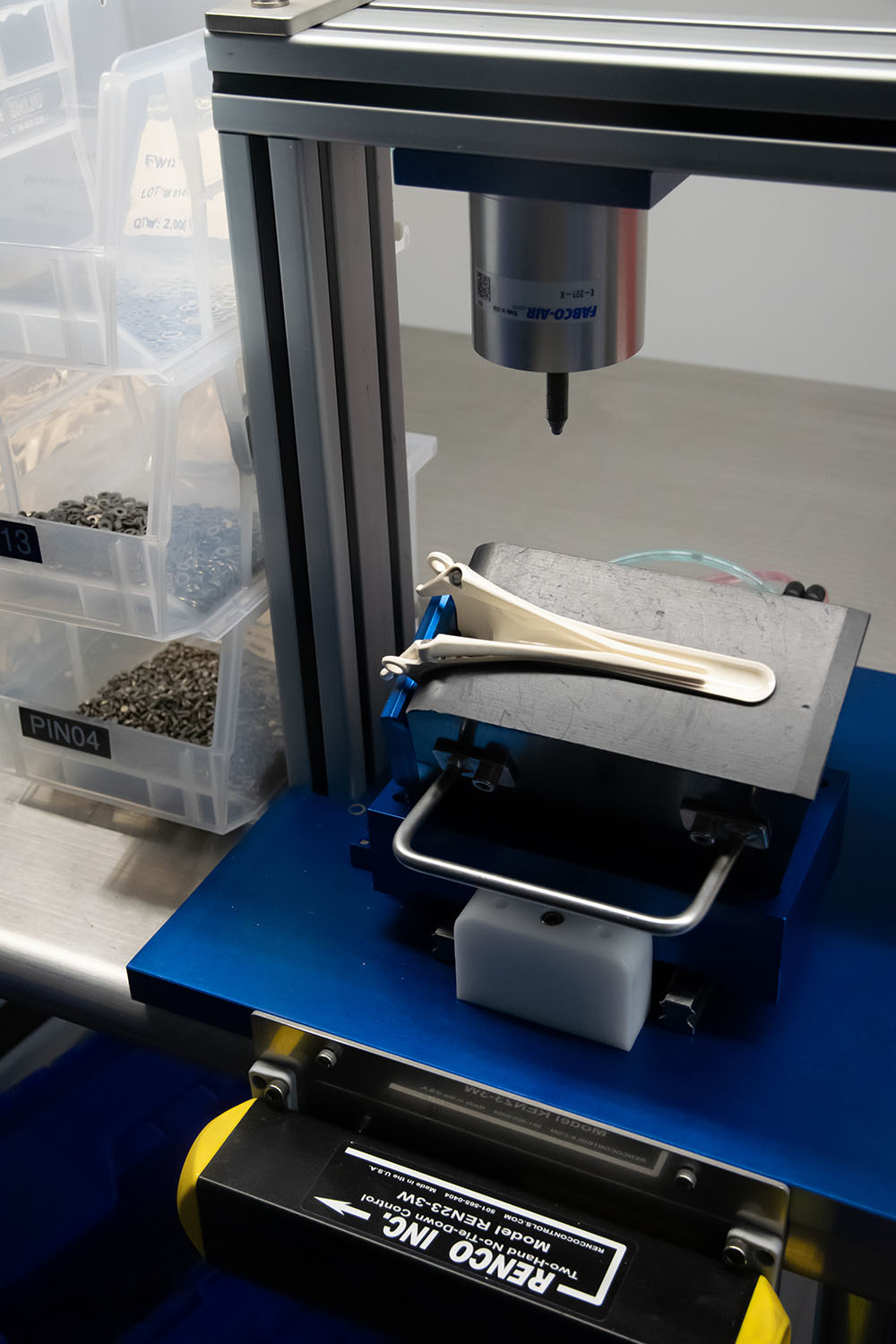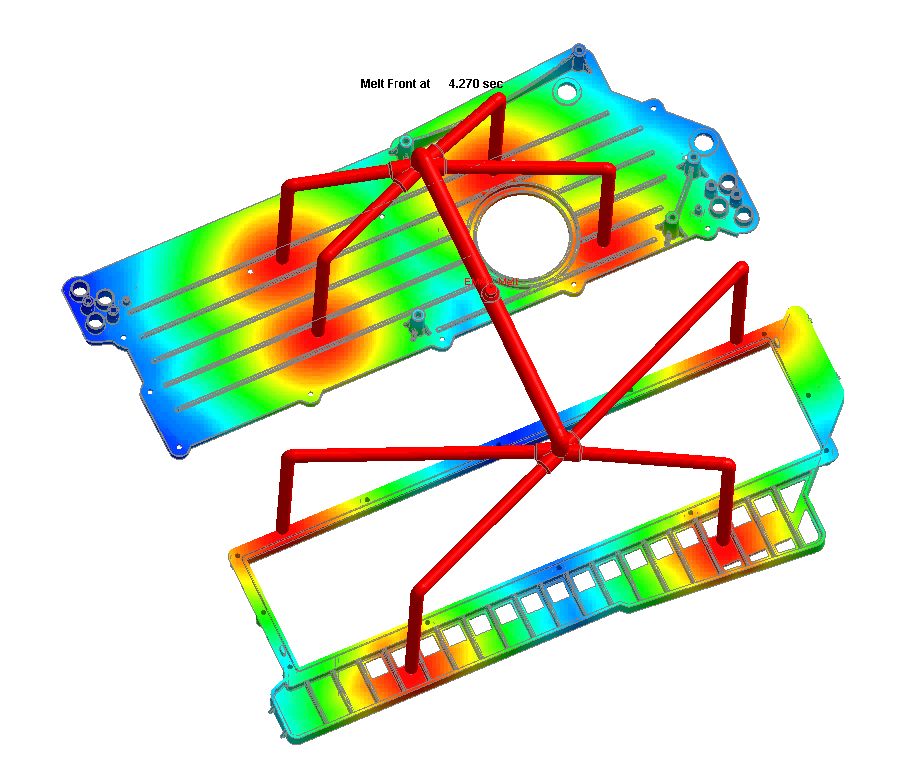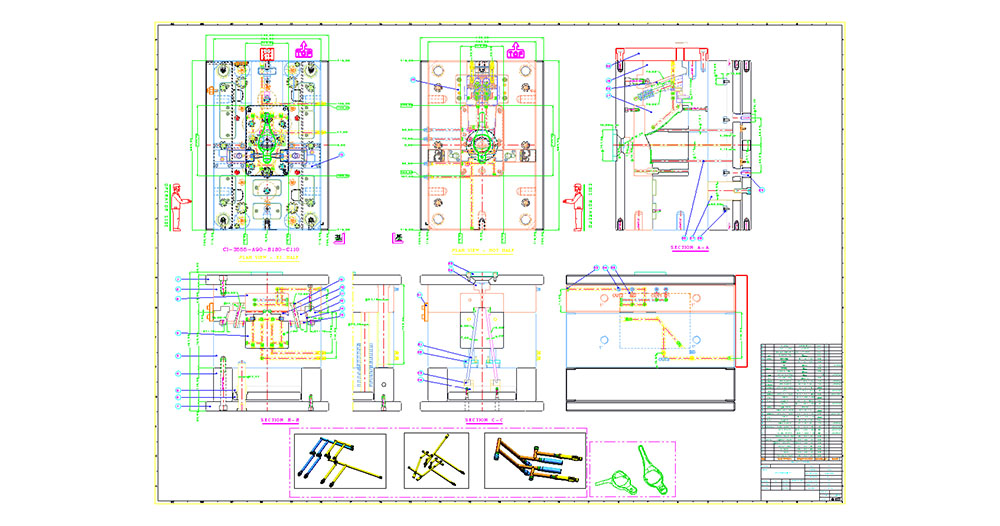Quality Made Us Global
Product Development
A Better Approach to Prototyping and Testing
When your company knows it needs particular plastic parts or components, you may want to validate it’s going to perform the way you need it to in the intended application and environment. The way to achieve peace of mind when your product is on track is through prototyping and testing. But not all prototyping is created equal. At Global Plastics, our methods for prototyping and testing are designed to provide the customer with the prototypes they need for their testing and ensure manufacturability of your injection molded part. The end result is a seamless transition into full production runs of your injection molded part.
Design for Manufacturing is the Key

Everything is proceeding as planned, until you realize you will need large-volume production runs of the item, which is not something the prototyping service can do. Even some injection molding companies may not be able to offer the scalability you need. So, you contact a full-service plastic injection molding provider with your prototype in hand, only to discover there are problems with the part design that will prevent it from being manufacturable. When this happens, it can feel like you must basically start over. Meanwhile, you’re losing time and money and feeling frustrated. Design for manufacturing (DFM) is a process that can avoid this scenario.
In a DFM product development and design process, manufacturability is the driving force early on. Design issues that stand in the way of manufacturability are identified and resolved as a part of the development and design process rather than becoming a project stumbling block further down the road. The prototyping methods we use at Global Plastics get the final result you need. You’ll know the part will work as intended while also being ready for full injection molding production runs because you’ve already been working with the partner who will do the manufacturing. Our experience has proven time and again how this is far more efficient and cost-effective than a meandering path with starts and stops along the way.
While 3D printing your plastic part or component is often the fastest way to get it in your hands, it is often not the ideal way to produce what you need. Plastic parts made with 3D printing are often not as strong or impact resistant as an injection molded part. Placed side-by-side the 3D printed part and the injection molded part may look exactly the same, but their quality and performance may be vastly different. 3D parts are good for reviewing the size, shape and design, but not always the function. The quality of the 3D printed part is typically lower, which means it can’t even be properly tested for the intended application—the results will largely be meaningless.
To take full advantage of DFM, you want a real injection mold prototyped with real injection molded parts. This kind of prototyping will exactly duplicate the production capability because we’re doing the prototyping in-house with our manufacturing capabilities in mind from the beginning, including the exact production materials and processes. Traditional rapid prototyping methods simply can’t offer the DFM advantage. Some rapid prototyping services may alert you about the manufacturability of your product, but they can’t tell you what you need to do to make it manufacturable. Only a full-service injection molding partner with its own in-house tooling department like Global Plastics can do that.
Global Plastics does offer 3D printing and rapid prototyping services for clients who need it because sometimes it does make sense. We typically do rapid prototyping by making the mold out of aluminum, which is capable of handling limited, low-volume production runs when you need plastic parts or components faster than is possible with standard production prototyping.


Regulatory compliance can also present a challenge. If your part must be approved by the FDA or other regulatory agency, what you submit must match exactly what the final production product will be. You cannot use a 3D printed part for regulatory approval if what you eventually need is a plastic injection molded part. You must submit both the mold and sample products that match exactly what the final produced part will be. The production prototype mold cavity might only produce one part, but it is a part that can be submitted for regulatory approval.
This is one of the main advantages of the way we do prototyping and testing at Global Plastics. You get a real injection molded part ready for the regulatory approval process. If the mold created must later be modified in order to increase cavitation, meaning the number of parts produced by the mold to further reduce per-unit cost, then you may only require submitting a revision to an approved product as opposed to starting the approval process all over again from scratch. This results in huge savings of both time and money.
Yes and no. Tooling a production mold is more expensive. It’s an investment. And while it necessarily means more up-front costs in both time and money than rapid prototyping, we have all kinds of ways to make it more affordable.
First, it’s important to pay attention to per-unit costs. The per-unit cost of 3D printing a plastic part or component can be quite high. This is why 3D printing on a larger scale is not feasible. It may work well for very limited runs, but when you need scalability on the order of tens of thousands or millions of parts, injection molding is typically far more cost-effective. It just takes more up-front investment, but the return on investment through our design for manufacturing prototyping methods pays off big dividends when it’s time to scale up production.
Global Plastics has developed expertise in production prototyping with less cost than other vendors. We do this by achieving an optimal mix of automation and manual processes, as well as making use of existing molds of related products that can be modified without purchasing a whole new mold. This approach, sometimes referred to as “bridge tooling” is especially good when accelerating the timeframe of prototyping is important. While a typical lead-time on a full production mold can range from 12–16 weeks, our rapid production prototyping methods can reduce that to only 2–4 weeks depending on the complexity of the part, which is incredibly fast for large-volume production runs. The simpler a part, the faster it can be prototyped for production.
When you account for the end result of a lower per unit cost for large-scale production and the streamlined efficiencies that come with design for manufacturing, the Global Plastics approach to production prototyping offers a superior proof-of-principle path to get businesses where they need to be with their plastic injection molding projects and a better return on investment.
Whether the client is a startup company or a well-established business, working with Global Plastics is a collaborative process based on mutual trust and understanding. Our experience in fast production prototyping and design for manufacturing combined with our in-house tooling department, state-of-the-art injection molding technology, and expert staff are at your disposal. We take the time to fully understand what each client wants for an end result, then engage the design for manufacturing process to provide key insight into what design challenges must be solved to ensure manufacturability of your plastic parts and components.
Keep in mind the limitations of prototyping services, 3D printing, and smaller injection molding providers who don’t offer a full range of services. They may have a role to play in some projects, but if you’re aiming for scalability in order to eventually produce large volumes of plastic parts as cost effectively as possible, we invite you to learn more about Global Plastics and the role we can play in moving your project from the conceptual ideas stage to a fully designed part that can be injection molded at scale.
Our full-service, in-house tooling department not only expertly machine tools your molds to the highest standards using the most suitable steel for your project, but also proactively manages all tool assets with the goal of maximizing each mold’s production lifecycle. For production runs, Global Plastics maintains a fleet of 70+ NISSEI plastic injection molding machines in a variety of configurations ranging in clamping pressure from 40 tons all the way up to 1,000 tons.
The main pages of our website provide a broad overview of our capabilities. You can also drill down into subpages to find greater detail about specific manufacturing processes we use, as well as industry-related information to see the types of projects we’ve handled for a broad array of clients. We make collaboration and communication a top priority with every customer. You’ll never be left guessing or wondering about the status of your project because of the frequency of our communication and easy access to project status updates.
We look forward to meeting you. Get in touch with us through the contact us page of our website to learn more about how Global Plastics can meet your production prototyping and injection molding needs.
Prototyping and testing is faster and more cost-effective when done by the full-service partner who will also handle production runs.